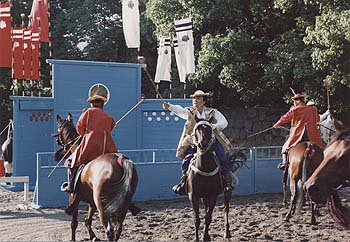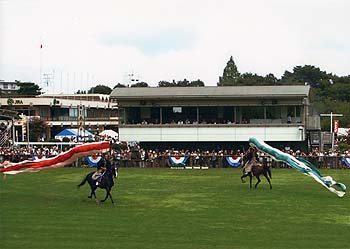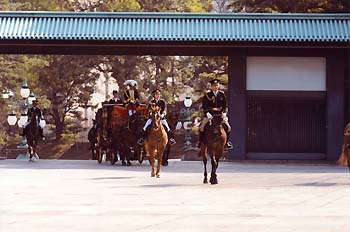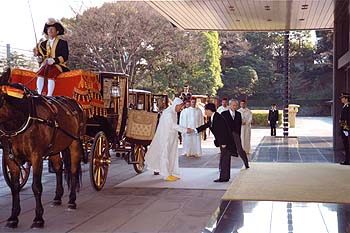Traditional Horsemanship in Japan
Dakyu (Ancient Japanese polo)

Dakyu is said to have begun in Central Asia, and travelled west to Europe to become the modern day game of polo. The same ancient game however is said to have also travelled east to China where it became Dakyu, and finally reached Japan via the Korean Peninsula during the 8th or 9th centuries.
Subsequently, in the Nara and Heian periods, Dakyu came to be played at the Imperial Palace around the time of the Tango Boy's Festival (May 5). During the Kamakura period the game declined, but by the time of the Edo period, Tokugawa Yoshimune, the eighth Shogun of Tokugawa government, promoted the game as a form of exercise for warfare on horseback and new methods of competition were devised, leading to its resurgence.
From the Meiji period, ancient traditional forms of equestrianism were increasingly challenged by more practical European forms, and Dakyu once again underwent a transformation and was modernized somewhat, but in the stables of the Imperial Household Agency, Dakyu is still practiced and preserved in the former popular mid-Edo period style.
Dakyu is played on a field 20m by 50m, on which five riders on each team attempt to score "goals" against each other. There is only one goal post, on which banners (red and white) are raised when a team scores a goal. The game is concluded when 12 balls (11 balls and one final goal) have been played.
Horohiki (pennants streaming)

In records from the Heian period, up to the Muromachi period, various Chinese characters with the same pronunciation were used to describe Horohiki. It is likely that the origins of the word come from not one single source, and while the origins of use remain unclear, it is surmised that in olden times, the word Horohiki was used in reference to military equipment and armor used to ensure that defeat in battle could be avoided.
Eventually, during the peaceful mid-Edo period, the term Horohiki came to be used as a description of carrying equipment and armor on horseback, and it became something of an equestrian art form, with various Daimyo (feudal lord) displaying the prowess of their troops through this art form. Horohiki, which has been passed down through the generations to the stables of the Imperial Household Agency has its origin in that period.
The horses that are used in Horohiki performances have been specially trained to pace (amble), almost resembling dance steps, which enables the pennants borne by the riders to stream gracefully out in the wind.
Horse-drawn Carriage Procession on the Occasion of the Ceremony of the Presentation of Credentials


On the occasion of the Ceremony of the Presentation of Credentials of a newly appointed foreign Ambassador Extraordinary and Plenipotentiary, the Ambassador can select to be driven to the south portico of the Imperial Palace from Tokyo Station, in horse-drawn carriage, a total distance of about 1.8km, or in an automobile from the Ambassadorial residence.
While it is the case that a small number of countries throughout the world still use horse-drawn conveyances for the purpose of welcoming new Ambassadors, such as the United Kingdom and Spain, in Japan it is the case that most Ambassadors prefer to ride in the carriage rather than use an automobile and this helps to improve international good-will.
The carriage used to convey foreign ambassadors is a barouche drawn by two horses, and was mostly assembled during the period from the end of the Meiji era to the beginning of the Showa era, and as such also has a good deal of artistic merit.
Horse-drawn carriage processions are also used on the occasion ceremonies relating to the Enthronement of His Majesty the Emperor, and the marriages of members of the Imperial Family.